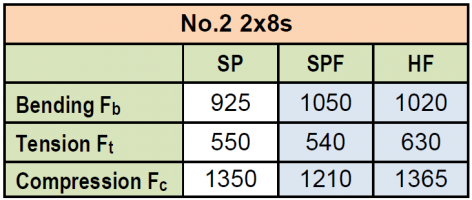Kevin Stokes
REGISTERED
Hi all,
Quick Rundown:
What we’ve done:
What we know:
To the best of our understanding, IRC 2009 R401.4 requires the builder to perform soil testing or removal/fill if the building official deems it necessary based on quantifiable data that indicates expansive, shifting soils are present.
Is it possible that the builder did this correctly and to code? Logically, it seems like the first step to designing the foundation is to determine the bearing capacity of the soil so that you can determine the correct pier spacing and number of piers to adequately support the load of the structure....is this correct? The builder is adamant that the pier spacing is sufficient (he said he used a calculation app on his iPhone to determine this), and that the 2' deep piers are sufficient for the site.
We've been trying to get information from the city but haven't gotten anywhere yet. We're on the verge of lawyer up, but fear that the legal cost if we lose could exceed the cost of fixing it ourselves.
Any opinions on what we should do and if this sounds like standard practice?
Quick Rundown:
- Home was purchased in late March 2018
- Began to see cracking in walls in April
- Multiple cracks on walls around door frames, cracks in ceiling, several interior & exterior doors won’t open/close
What we’ve done:
- Hired structural engineer
- Engineer report was non-invasive, limited to visual inspection of home and crawlspace, measured home for level
- Engineer report stated the spacing of piers was too wide and recommend that pier spacing was reduced to a max of 8’ oc. Measurements showed the house had sank roughly 1” down the center when the engineer inspected in early June
What we know:
- Expansive/shifting soils are present onsite (soft, sticky, clay)
- No soil testing was performed prior to foundation design/install
- Foundation plans were done in house
- Foundation plans were not engineered
- Piers are spaced roughly 10’ OC (girders) X 14’ OC (floor joists)
- Pier depth to a max of 2’
- Signs that the sonotube piers were not constructed according to manufacturers specifications (does not appear that vibration was performed as the concrete is not compacted)
To the best of our understanding, IRC 2009 R401.4 requires the builder to perform soil testing or removal/fill if the building official deems it necessary based on quantifiable data that indicates expansive, shifting soils are present.
- Builder said he had no knowledge of shifting/expansive soils until after construction of the foundation. (Sure, right)
- City had no building official at the time permits were pulled
- Plans were reviewed by 3rd party company and approved with stamp on them stating "Follow I-Code for Foundation"
Is it possible that the builder did this correctly and to code? Logically, it seems like the first step to designing the foundation is to determine the bearing capacity of the soil so that you can determine the correct pier spacing and number of piers to adequately support the load of the structure....is this correct? The builder is adamant that the pier spacing is sufficient (he said he used a calculation app on his iPhone to determine this), and that the 2' deep piers are sufficient for the site.
We've been trying to get information from the city but haven't gotten anywhere yet. We're on the verge of lawyer up, but fear that the legal cost if we lose could exceed the cost of fixing it ourselves.
Any opinions on what we should do and if this sounds like standard practice?










